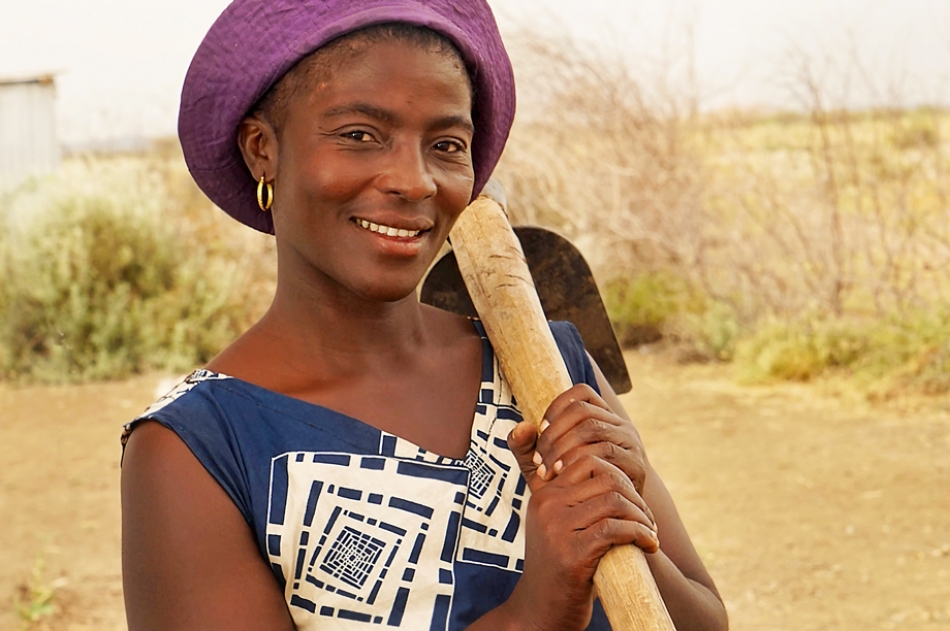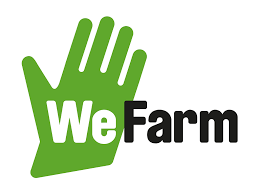- Hits: 11185
Refugee changing her life by growing sweet potato, okra and kale in her camp kitchen garden
 Sarah Sikatenda, a refugee from Democratic Republic of Congo, now farms to feed her family and build a future. Photo: Sven G. Simonsen/ FAO.
Sarah Sikatenda, a refugee from Democratic Republic of Congo, now farms to feed her family and build a future. Photo: Sven G. Simonsen/ FAO.
A middle aged woman who a year ago decided to wisely utilise a space allocated to her in Kalobeyei Integrated Settlement, an extension of the vast Kakuma refugee camp in Kenya is now able to eat well thanks to sweet potato, okra and kale among other farming ventures she involves in.
“My life is so different now,” says 23-year-old Scofia Sadik Mandera, with a big smile on her face. “We have vegetables to eat, we have a balanced diet. I have more energy.” Over the past year, Scofia has grown her own kitchen garden – one of more than 7 000 in the Kalobeyei refugee camp in northern Kenya.
The camp was established in 2016. It is now home to nearly 40 000 people and itself houses 145 000 residents. Ever since the camp was built, FAO has supported agricultural activities at Kalobeyei as a way of improving the self-reliance of both the refugees, and the host population who live around the camp.
RELATED ARTICLE: Daadab refugees find reprieve in pawpaw, bean cultivation
Fresh, nutritious and home-grown
Each refugee in Kalobeyei is expected to survive on a monthly cash budget of USD14, which does not go far in purchasing fresh, nutritious foods in the market. As an alternative, FAO has supported refugee households by equipping them with seeds, tools and manure, as well as a training scheme that enables them to set up their own kitchen gardens.
“The garden provides enough food for me not to have to buy vegetables at the market, so I’m very happy,” says Scofia. A refugee from South Sudan with a background in farming, she lives here with her two-year-old son Samuel.
“During the long rains, I grew sweet potato, okra and kale. Now I’ve planted watermelon and sweet potato,” Scofia explains.
Water is very scarce in this region, and Kalobeyei households receive only 15 litres per person per day. All they have to irrigate their gardens is household wastewater. Some houses also have tanks that collect rainwater off the roof of their houses.
RELATED ARTICLE: Climate refugees, Kenya’s ticking time bomb
‘Stranded and confused’
Sarah Sikatenda, 37, is Scofia’s friend and next-door neighbour. A refugee from the Democratic Republic of Congo, she too has a farming background. She lives with her husband Didier and their five children, the youngest of whom are two-year-old twins.
“When we first came here a year ago, I felt stranded and confused. And I didn’t know how I could farm here,” she says. “But then I met an FAO field officer who showed me the opportunities and I was able to attend several training sessions. I am so thankful for what they have done for me and my family.”
Currently Sarah’s kitchen garden is quite dry due to the lack of water. “During the rainy season, I was able to harvest vegetables, cowpeas, okra and sweet potato,” she says. “Our priority is family consumption, but I was also able to sell some of my produce on to other families,” she adds.

During the rainy season, Sarah was able to harvest vegetables, cowpeas, okra and sweet potato. Photo: Sven G. Simonsen/ FAO.
Integrating with the host populatio
Alongside 750 other households – consisting of both refugee and host population – Scofia and Sarah also have a plot of land not far from where they live. It forms part of a 400-hectare area that has been set aside for agriculture. All of the households participating in this scheme have received FAO support in the form of seeds, tools and training.
The purpose of this is to bring the two populations together as much as possible – and it seems to work well. “We’re in the field together; we work, chat, and learn from each other. It’s nice,” Scofia remarks.
RELATED ARTICLE: Campaign transforms war zones into kitchen gardens
Last season Scofia and Sarah both cultivated their plots here for the first time. Sarah lost most of her crop to locusts and drought and Scofia harvested a modest 15 kg of sorghum from her plot, but they are hoping for better harvests in the future.,.
“We never lose morale,” Sarah stresses. “Back home, too, sometimes we had a failed crop. The soil here is as fertile as it was there; the only difference is the water.”
In the past, both women used to plant by “broadcasting” the seeds: that is, scattering them over the ground. Now they have learnt to plant in rows, which is more labour-intensive but makes for a bigger and better harvest.
Dreams for the future
When we ask about her dreams for the future, Sarah thinks for a moment: “I dream of being able to plant my crops and harvest so much that I can even sell my produce to towns nearby.”
And if she were able to return home to Democratic Republic of Congo, would she be farming differently after learning so much here?
“Yes I would. And I would teach others too!”
By investing in people’s livelihoods, FAO is empowering them to take action and be a part of the global goal to achieve Zero Hunger.
Write comment (0 Comments)
















